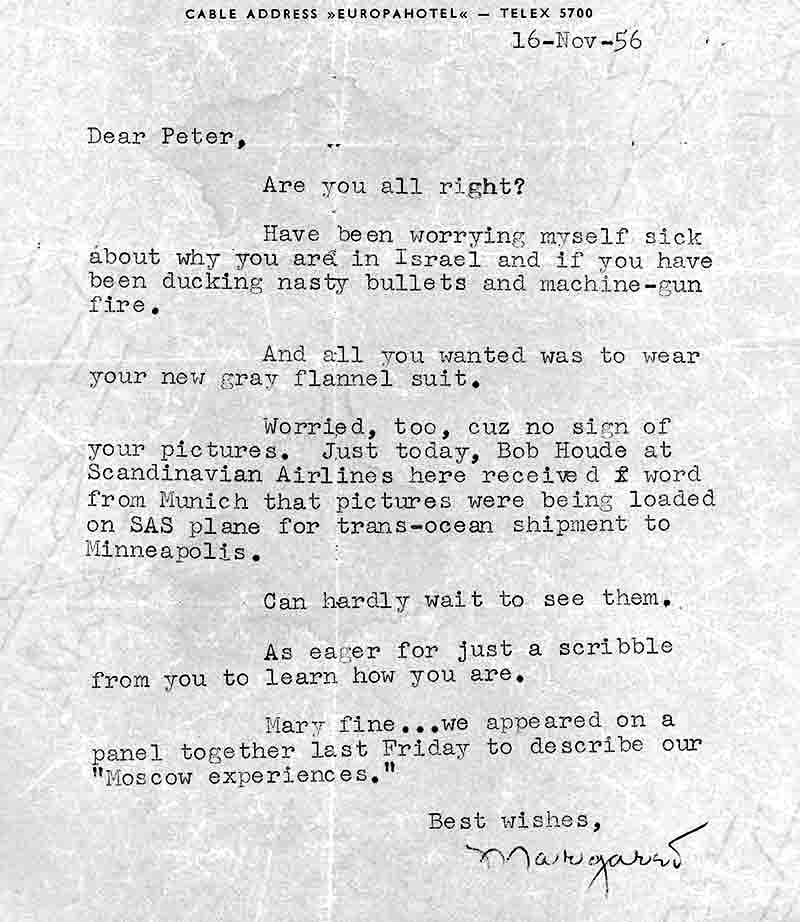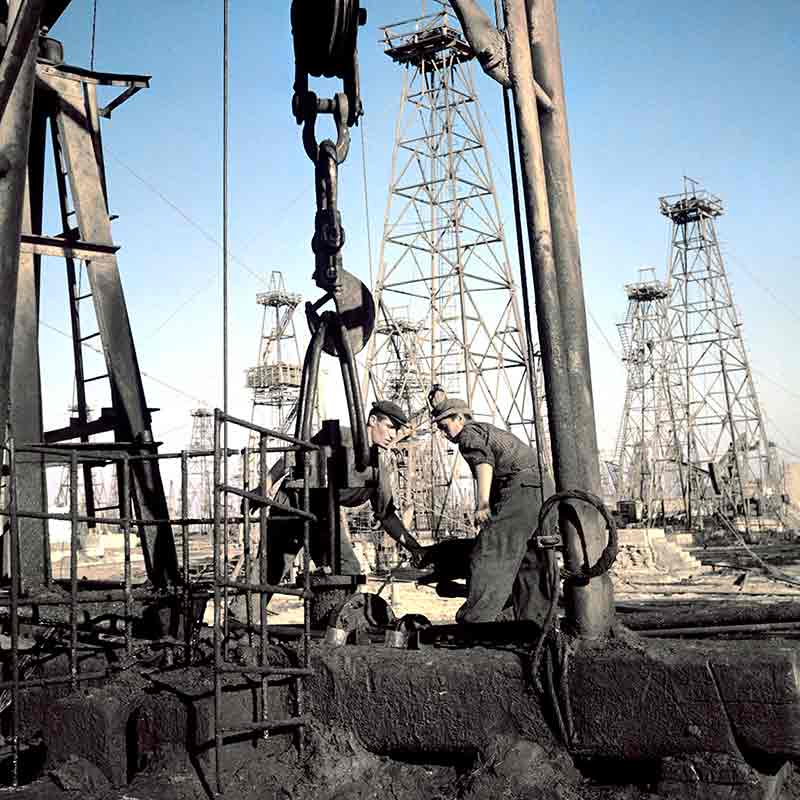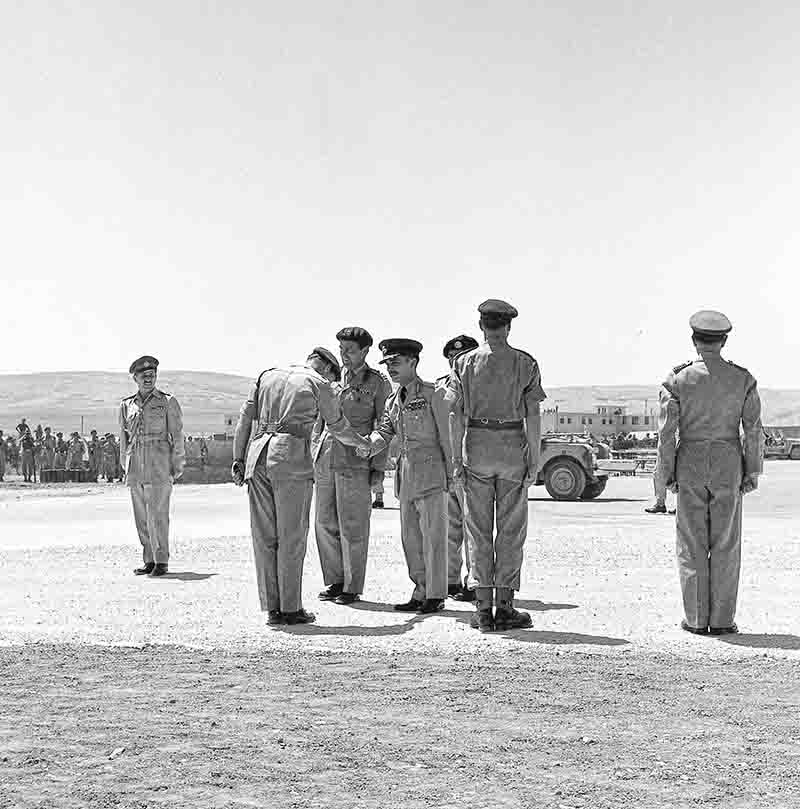The Suez canal was created in the 1860s by France and Egypt. Cutting through the narrow strip of land that connects Africa with Asia, it connected the Red Sea and the Mediterranean and launched a new era of international trade and travel.
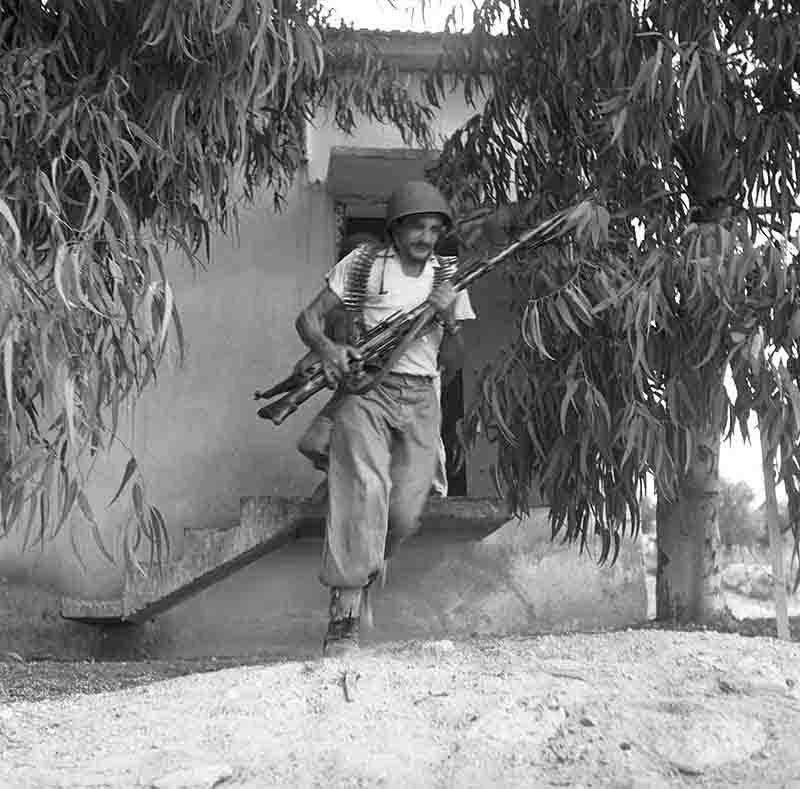
After the nationalisation of the Suez Canal by the Egyptian leader Nasser, a world political crisis occurred in the fall of 1956. The Suez crisis marked the end of Great Britain and France as great powers. It created a new world order formed by two superpowers, the USA and the Soviet Union.
In February 1956, French Prime Minister Guy Mollet formed a new coalition government in Paris. The central concern of the new government was the pacification of its former colony, Algeria.
The Algerian guerrilla war had escalated continuously since the revolt against French colonial rule in 1954/55. The Egyptian revolution and its anti-imperialist rhetoric had long given the Algerian liberation movement Front de Libération Nationale (FLN) additional impetus. Egypt more or less openly sided with the FLN.
Paris started thinking about a "tougher" French policy towards Egypt. The Algerian FLN was to be isolated: either Egypt was to be persuaded by diplomatic pressure to give up its support for the FLN or Cairo was to be forced to do so by military means.

During the summer of 1956, France and Israel began talks at several levels, focusing on military cooperation between the two countries - also in view of the political situation in Egypt. In February 1956, Israel and France began initial talks.
A first secret meeting of the military leaderships followed in June. Israeli Chief of General Staff Moshe Dayan explained to the French government that the policy of Gamal-Abdul Nasser - then President of Egypt - was directed against any European influence in the Arab world.
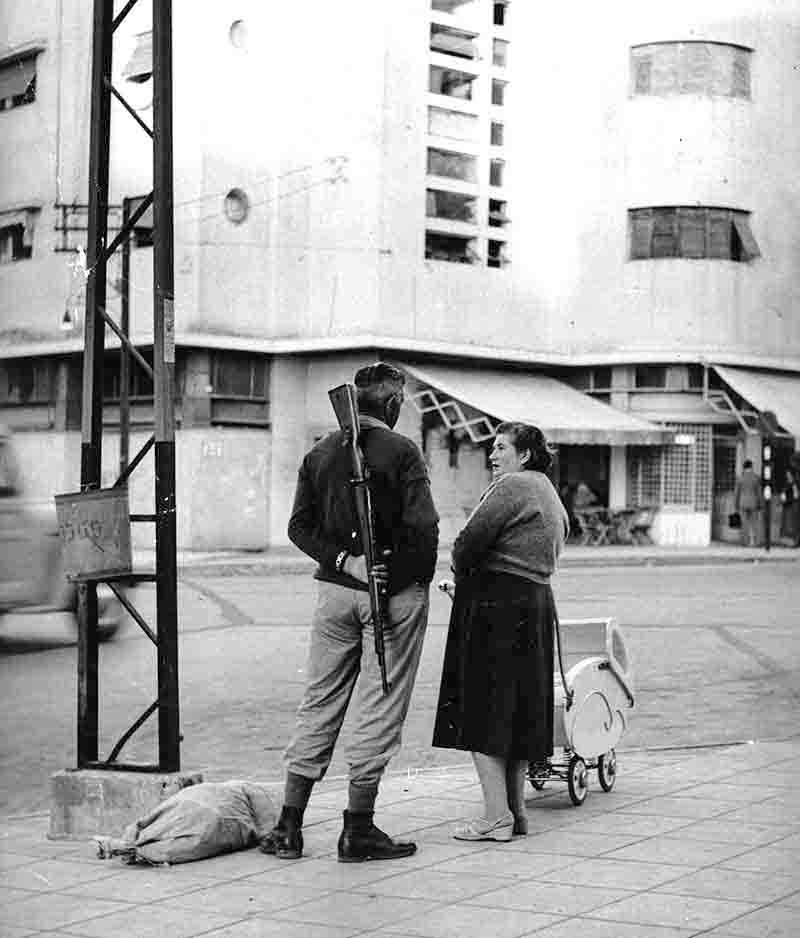
Moreover, Nasser had never concealed his enmity against Israel since he came to power. Sooner or later there would be an Israeli-Egyptian war.
Egypt did not recognise the state of Israel and denied any diplomatic relations with its Western-oriented neighbour. It had blocked the Strait of Tiran, cutting Israel off from maritime trade through the Red Sea and closing the Suez Canal to Israeli ships.
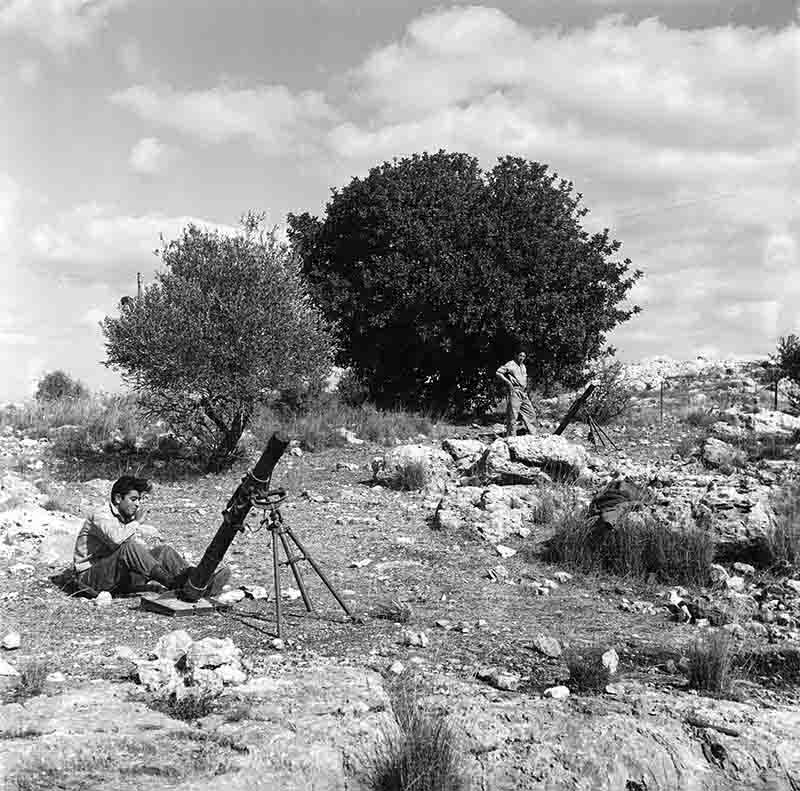
Political developments in the region - notably the British withdrawal from their former colony Egypt and Nasser's "anti-British" policy - had made it necessary to shift the focus of British policy from Cairo to Baghdad.
After taking office in 1955, the then British Prime Minister Anthony Eden therefore placed Iraq at the centre of his Middle East policy. Iraqi Prime Minister Nuri al-Said cooperated with London in building an alliance system that - from the point of view of Britain and the USA - was to be directed against the Soviet Union.
In the Baghdad Pact, in which Great Britain, Iraq, Turkey, Iran and Pakistan as well as the USA were involved as observers, the British government saw above all the opportunity to once again consolidate its position in the Near and Middle East.
Egyptian President Nasser, however, warned the British government that forcing the establishment of such an alliance would meet stiff Egyptian resistance.
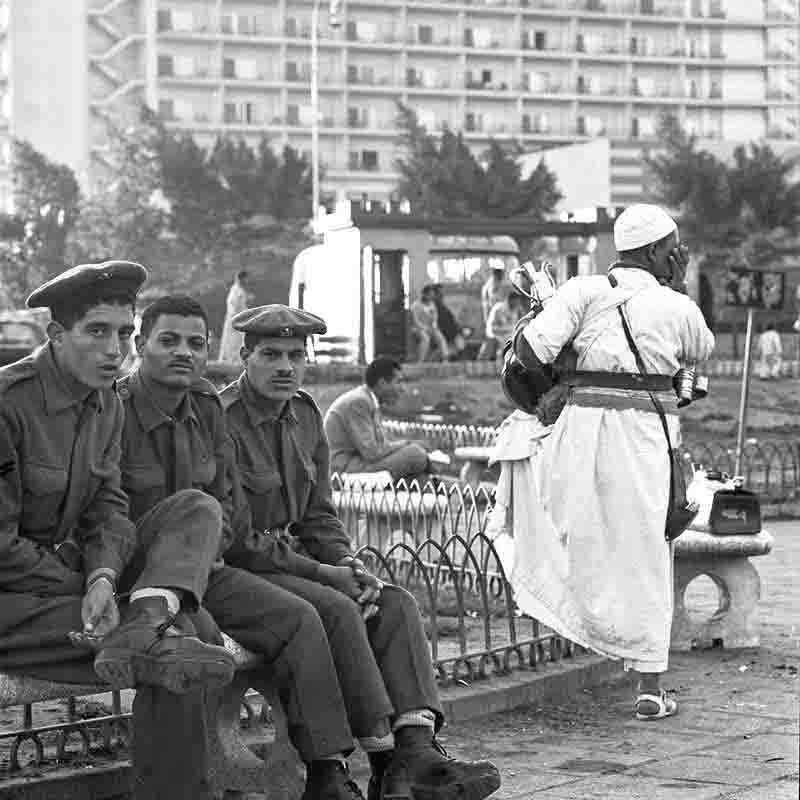
During this period, the USA drafted its Middle East policy against the background of the East-West divide. Both the US Secretary of State John Foster Dulles and the British Prime Minister Eden agreed to support Egypt in the construction of the Aswan Dam, which Nasser was planning to eliminate mass poverty in Egypt.
However, the Americans came to the conclusion that Nasser could no longer be won over to the West because the Soviet Union's influence seemed too great. As a result, in mid-July 1956, the USA and Great Britain withdrew their promises of financial support for the dam project.
Nasser turned successfully to the Soviet Union. On July 26 1956, without further discussions with London and Paris, he nationalized the Suez Canal. The Egyptian army occupied the offices of the Suez Canal Society in which France held a majority stake and British banks and companies held about forty per cent. The shareholders of the Suez company were financially compensated by Egypt
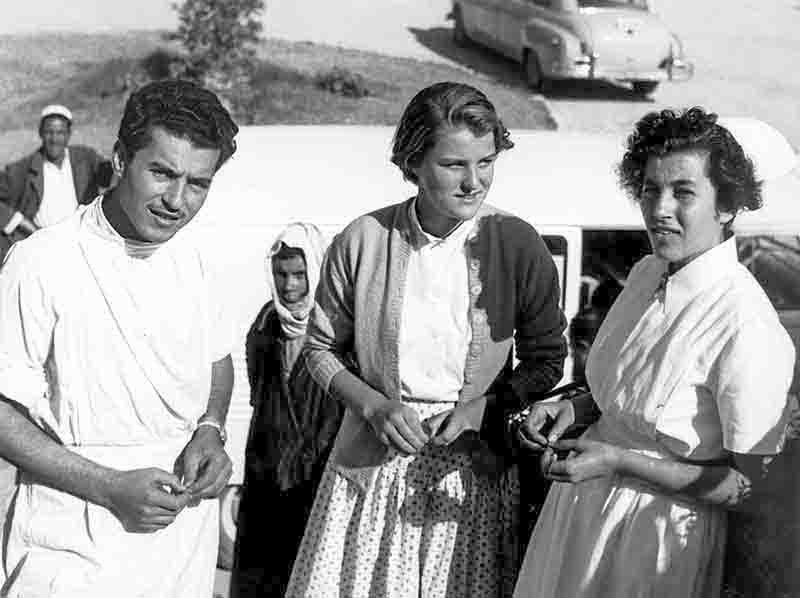
The first days after Nasser's declaration passed without a military response. The USA tried to defuse the international crisis it had triggered by means of public statements, negotiations, conferences and advice from the UN.

At the end of October 1956, representatives of France, Great Britain and Israel met in Sèvres in the strictest secrecy to discuss and coordinate their action against Egyptian President Nasser. The allies concluded a pact, the "Sèvres Protocol": the Egyptian-Jordanian preparations for war at that time were to provide Israel with a pretext for an attack against Egypt.
Paris and London wanted to respond to this with an ultimatum to the warring parties, demanding the withdrawal of troops from the Channel Zone.
Nasser's foreseeable refusal to comply with this ultimatum was to be the pretext for the French and British military to "liberate" the canal, overthrow Nasser and station a Franco-British force on the canal around Port Said. France and Britain also agreed to supply Israel with weapons.
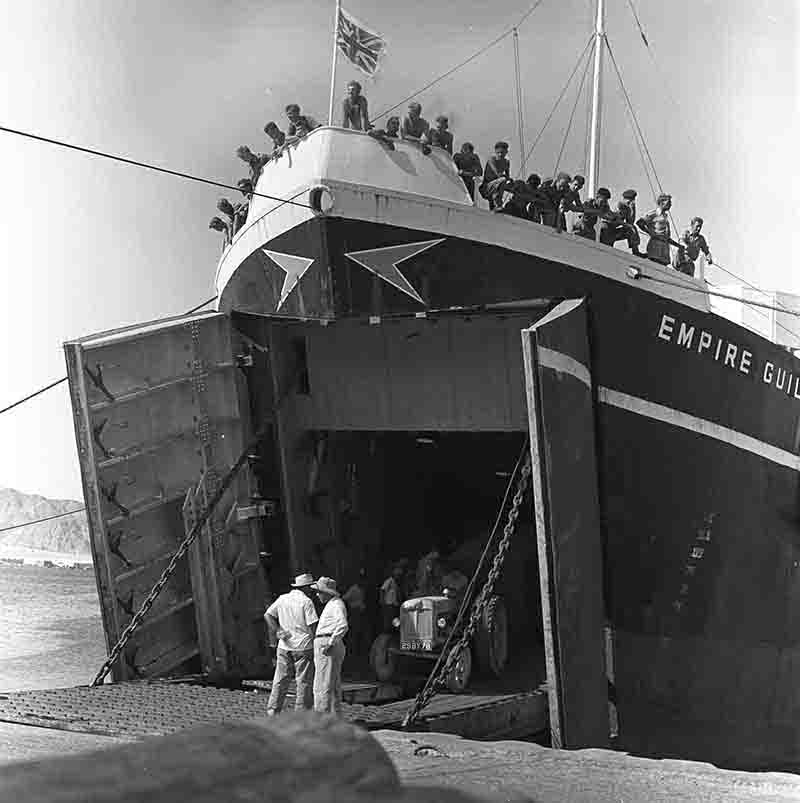
On the night of 28-29 October 1956, Israel launched "Operation Musketeer" in the Sinai Peninsula and Gaza Strip, as planned in the Sèvres Protocol. The next day, Britain and France issued an ultimatum calling for the withdrawal of both sides. Nasser rejected this on 31 October as expected.
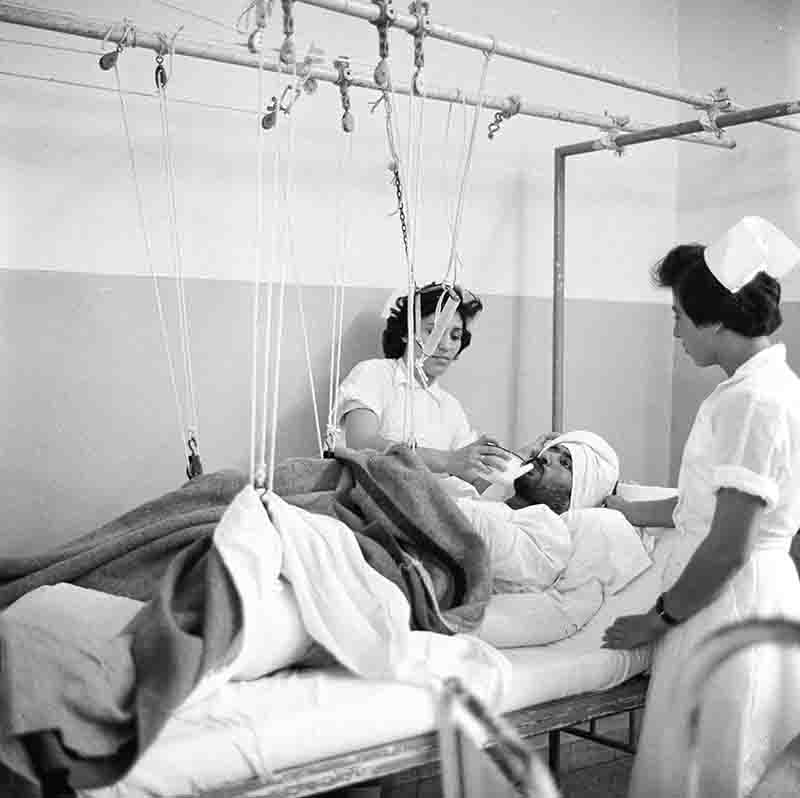
During the war, which was fought on two fronts, Egypt deployed about 150,000 men, of whom about 50,000 were engaged against Israel. The country suffered an estimated 1,650 killed, 4,900 wounded, and 6,185 captured or missing, most of them in the fighting in the Sinai. Israel, which deployed about 45,000 of its 100,000 ground troops in just over 100 hours of fighting, suffered 189 killed, 899 wounded, and four captured. Great Britain's ground forces numbered about 13,500 and France's about 8,500, overall losses ranging from 23 to 33 killed (some sources disagree on the number) and 129 wounded.
The same day, massive British and French air strikes began against Egyptian airfields and advancing units. Within two days, the Egyptian Air Force was almost completely destroyed. The crisis had turned into a short but intensive war, civilians suffered, soldiers died in battle and were taken prisoners of war.
On 2 November, the UN General Assembly called for an immediate cessation of hostilities, which France and England vetoed to give the Israelis enough time to achieve their military objectives.
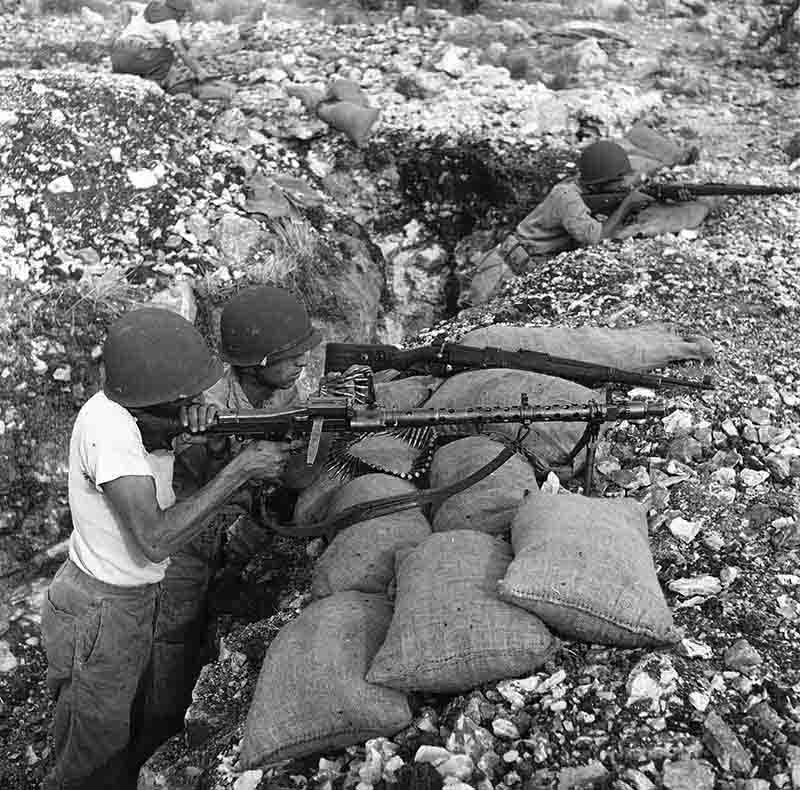
On 5 November 1956 the advance of the Franco-British expeditionary force began with the landing of paratroopers at Port Said, Port Fuad and Gamil airport. The following day, British and French naval units landed at the north end of the Channel and took Port Said.

Unexpected for the two European powers, however, was the reaction of the USA: Eisenhower immediately ordered sanctions. As early as 31 October, he stopped development aid to Israel and put pressure on the German government to also stop all deliveries (in accordance with the agreement on reparations). However, Chancellor Adenauer remained true to his policy of supporting Israel and did not comply with this demand.

Also on 5 November, both Israel and Egypt accepted the UN's call for a cessation of hostilities. On the same day, the Soviet government threatened "to use force to destroy the aggressors and restore peace in the Middle East". Mr Eisenhower, who had to survive the crucial phase of his election campaign during the crisis, was determined to end the matter quickly.
It became clear to Israeli Prime Minister Ben-Gurion that Soviet intervention in the crisis - and its acceptance by the US - had completely changed the situation. An Israeli adherence to the land gains was out of the question. Israel had achieved its military goals, but had to accept that it could not occupy the Sinai in the long run. In the following months, Ben-Gurion therefore tried to obtain the most comprehensive security guarantees possible in exchange for a withdrawal.

The crisis was coming to an end. France and England accepted the ceasefire, as Egypt and Israel had done before. The United Nations took over crisis management. When the first UN troops arrived in Egypt, the two European powers withdrew from the Channel Zone until 23 December 1956.
After the initial military success, the Suez crisis had turned into a humiliation, especially for Great Britain. Subsequently, Prime Minister Anthony Eden had to resign, the British economy and currency came under pressure.
The loss of Britain's world power became obvious - it was the last attempt of the former world power to assert its interests militarily without cooperation of the new superpower USA.

-
Suez Crisis Timeline
- October 8 1951 The Egyptian government unilaterally canceled the 1936 Egyptian-British treaty, which would have granted Britain a lease on the Suez base for a further period of 20 years.
- Oct 21 1951: British warships arrive at Port Said, more troops are on the way
- Jan 26 1952: Egypt is placed under martial law in response to wide-spread riots against the British.
- June 23 1956, Nasser elected president of Egypt without opposition.
- July 19 1956, Britain and US refused to provide financing for the Aswan dam project.
- July 26 1956, Nasser nationalized the Suez Canal Company.
- July 28 1956, Britain froze Egyptian assets in London.
- August 1 1956, US, Britain and France hold talks about the Suez Canal.
- October 29 1956, Israeli forces crossed the Egyptian frontier and drove toward canal.
- October 30 1956, Anglo-French ultimatum issued to Egypt and Israel asking that both withdraw ten miles from the canal zone. The ultimatum also asked Egypt to allow a "temporary" occupation of the zone, which Egypt rejected.
- October 31 1956, Anglo-French forces attacked Egypt in the Canal zone. Israeli occupied the Gaza Strip and key points on the Sinai Peninsula.
- November 5 1956, British and French captured Port Fuad and Port Said.
- November 6 1956, cease fire forced by U.S. pressure.
- November 8 1956, hostilities ended.
- November 21 1956, first UN peacekeepers arrived in the zone.
- December 22 1956, the last Anglo-French forces left the canal.
- March 1 1957, Israel agreed to withdraw from the Gaza Strip and Sinai.
Photo journalist Peter Bock-Schroeder had just returned from a long and demanding trip to Russia , when the chief editor of Revue Magazine sent him to the Middle East in October 1956, to cover the Suez crisis from Israel and Egypt.
